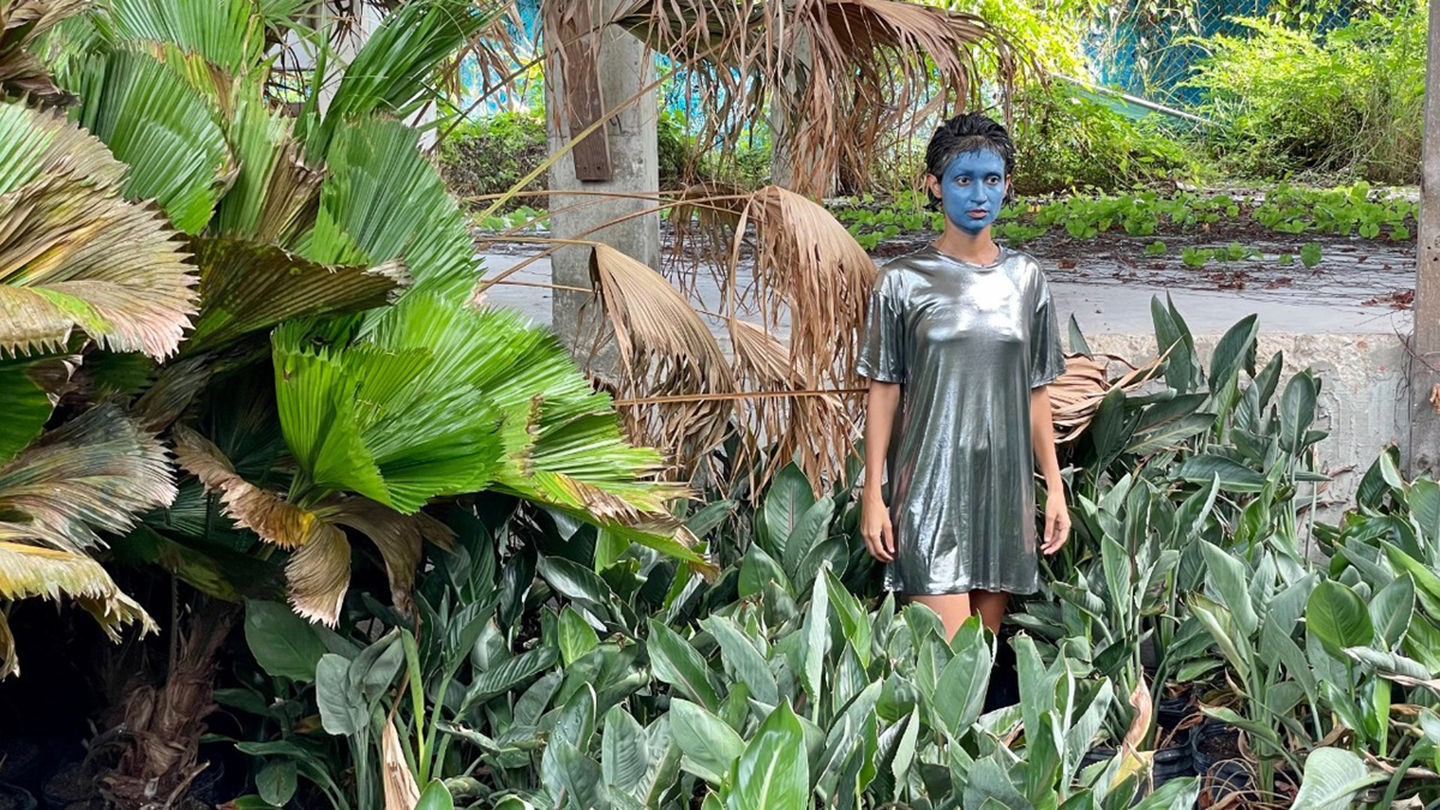When Himali Singh Soin was on her polar expeditions in 2017, something happened in the Arctic which stayed with her, a moment that became a method. A storm off Svalbard had scrambled the ship’s navigation system, and a thick fog descended on the water, obscuring the stars above. The ship’s captain gathered the crew onto the deck, drawing a map and telling them how to operate the boat’s sails, not knowing how long the outage would last. In that moment, Himali’s mind turned to the ancient Indigenous beliefs of the Arctic: it was said that when celestial navigation failed, travellers would listen to their kidneys to guide them — the body’s water regulation connecting with the seas and currents.
“I had this out-of-body feeling,” Himali says. “I am now part of the ship, and the ship is part of this ocean, and my body is part of the ocean.” Typical of the Indian artist’s practice, the experience both added to her existing philosophy and became an artwork in itself. Her epiphanies are bottled, laid out and then stretched and woven into sheets of ideas — layers of research on South Asian and Arctic history, spirituality and geology. This one became “Boatness”, an experimental text score that meets visitors at the entrance of The Third Pole, Himali and David Soin Tappeser’s exhibition at Museo Thyssen-Bornemisza in Madrid.
The work is “that feminine feeling of intuition as a method,” Himali says. “It’s a manifesto about that moment when the way you know the world, and the way you are in the world, are the same thing.” It’s a neat description of The Third Pole, an “open text” show which brings together poetry, film, textiles, photographs and performances from two ongoing series: “we are opposite like that”, based on material gathered during Himali’s polar fieldwork; and “As Grand As What”, a three-channel video ritual inspired by 13 neglected non-male deities and ideas of alienation — what Himali and David term “lost presence”.
The Third Pole refers to both a physical place and a web of ideas. “It is the dispersal of the anti-poles, the binary of the polar regions, but also the ‘third pole’ of the Himalayas,” Himali says. (Her father, an explorer, named her after the mountain range). “And it represents the other, the queer in-between. The missing space.”
Subscribe to i-D NEWSFLASH. A weekly newsletter delivered to your inbox on Fridays.
The exhibition is an invitation into this uncertainty. It is physically fragmented — the videos, texts and objects creating a multimedia pick’n’mix — but united by these core concepts. Viewers are transported to India and Nepal via field recordings and tapestries made with South Indian Ikat weaving. We are also asked to speculate — to lose ourselves in new modes of thinking on deep time, embodied in ice sheets, long-lost deities, and most importantly, the fluid relationship between humans and the environment.
Himali thinks anthropomorphically to reach these new frontiers. Her 2020 project Static Range saw her write a letter from the perspective of a lost nuclear device embedded on Nanda Devi, India’s second-highest mountain. (A major exhibition of the work will open at The Art Institute of Chicago in December.) In “we are opposite like that”, ice is the elder whose permafrost holds a millennia-old archive made up of marble dust and fossils revealing bird migrations.

A key touchpoint for The Third Pole is Gondwana, the pre-Jurassic landmass which comprised of Africa, America, India and Australia. Its existence emphasises the link between India and the poles, as well as “disbanding the idea of the global north and the global south,” Himali says. Photographs of Himali playing a silver foil-covered character roaming the poles are titled Inverted Map in a nod to this disruptive history.
These ideas can feel almost intimidating — Himali’s worldbuilding so limitless in its potential, so insistent in its shattering of anthropological binaries. Her use of characters makes it a little easier; guiding viewers through the disruption while tethering her physical body to the polar landscapes. In “we are opposite like that” Himali plays an alien figure who “forages for decolonial justice,” her body wrapped in silver foil and matching headdress, a role she reprises during the exhibition opening. “She is a brown body in a very white landscape,” Himali tells me. “Part of it but fundamentally alien to it.” Himali speaks about having felt less comfortable than her white European counterparts on her polar expeditions; the character allows her to extend her own intuitions, to push her own experience into imagined worlds of reconquering.
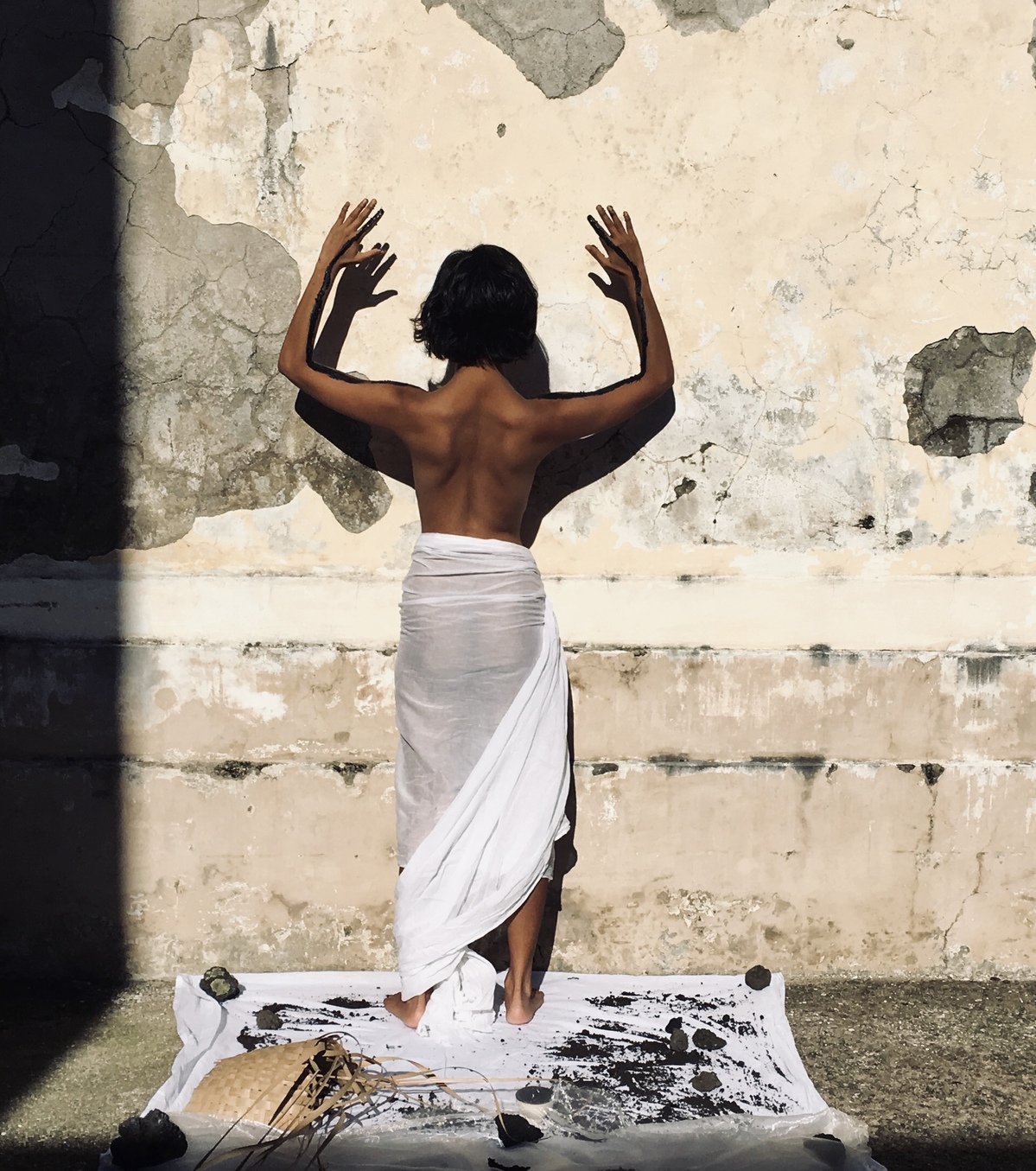
The audiences’ bodies are thought of in the same way: each one an indicator, an instrument that responds to natural forces like time and the passing of the seasons. A gong bath performed by David provides a soothing setting for Himali’s poetry in “Ancestors of the Blue Moon”. “As Grand As What” then reinforces this link between the earth and the mind, Himali describing lost presence as “another catastrophe; a crater in our consciousness,” while David’s ominous clarinet melody lends the rituals a sense of mischief. A stamp book in “The Static Range” is lickable, multiplying the means of perception. “You’re not watching it as a work of art,” Himali says of her films. “You’re watching it so that it can act upon you.”
If there is an environmentalism through the work, it is coded in doubt. “The characters have a troubled relationship with the natural environment,” Himali explains. “They look at the luminosity of the oil on the water and it inspires wonder in them; the Arctic character feels the heat and blackness of the coal mine and feels friendship with mine.” It’s the exhibition’s most relevant and radical idea. “There’s this new natural, and we are codependent with the toxicities around us,” Himali says.
Her art is not about linearity or logic, but the glitches, inconsistencies and discordances which underpin speculation. Ideas are felt rather than seen, the visual just one form of meaning. “These works create invisible connections between places and phenomena that are, at first sight, seemingly unrelated,” David says. “But they’re actually influenced by each other in this crazy web. Art is such a medium of the invisible.”
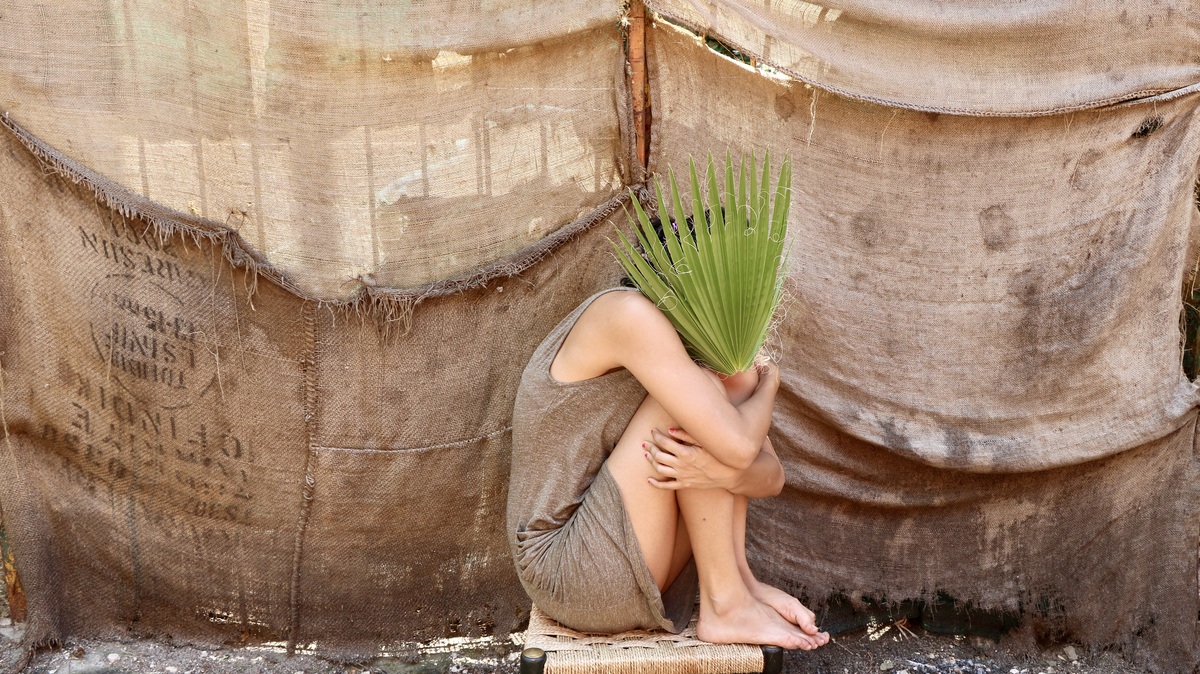
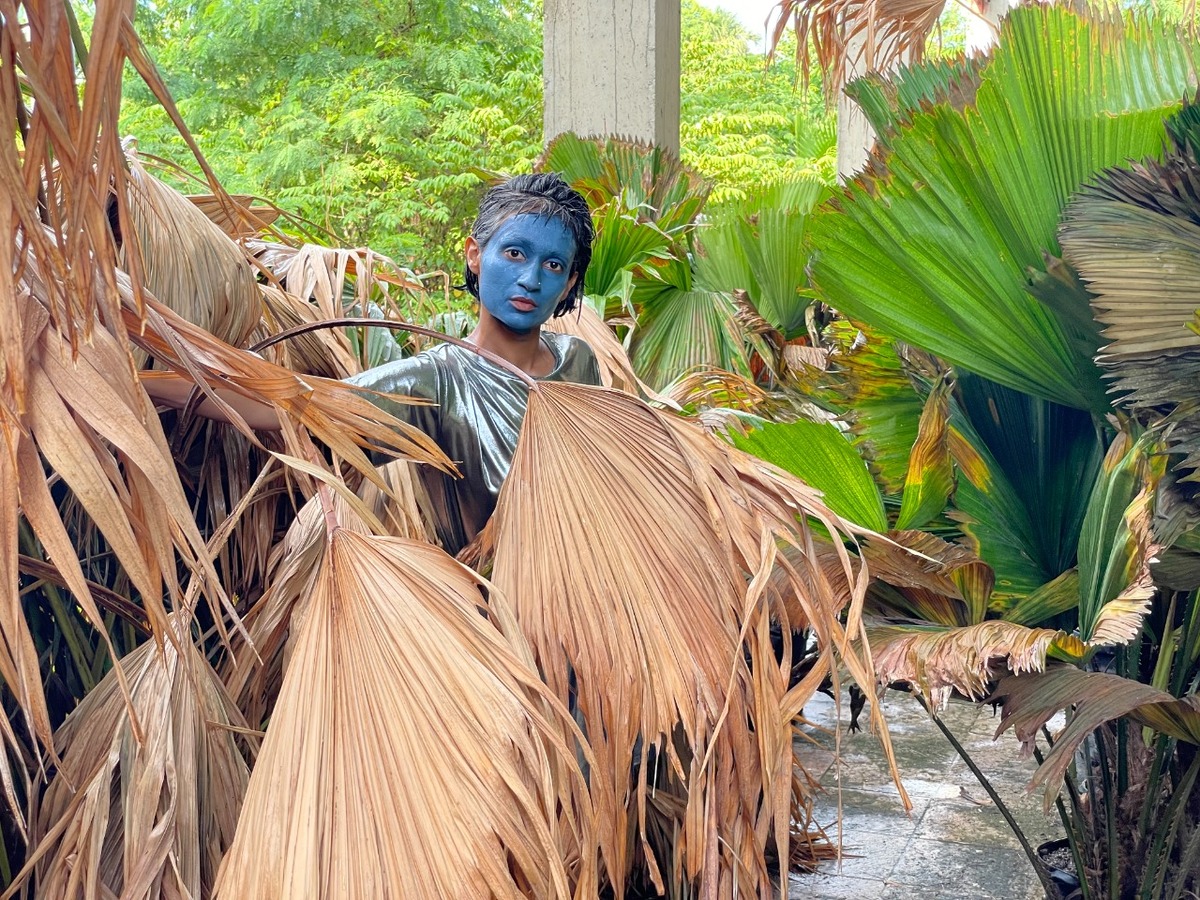


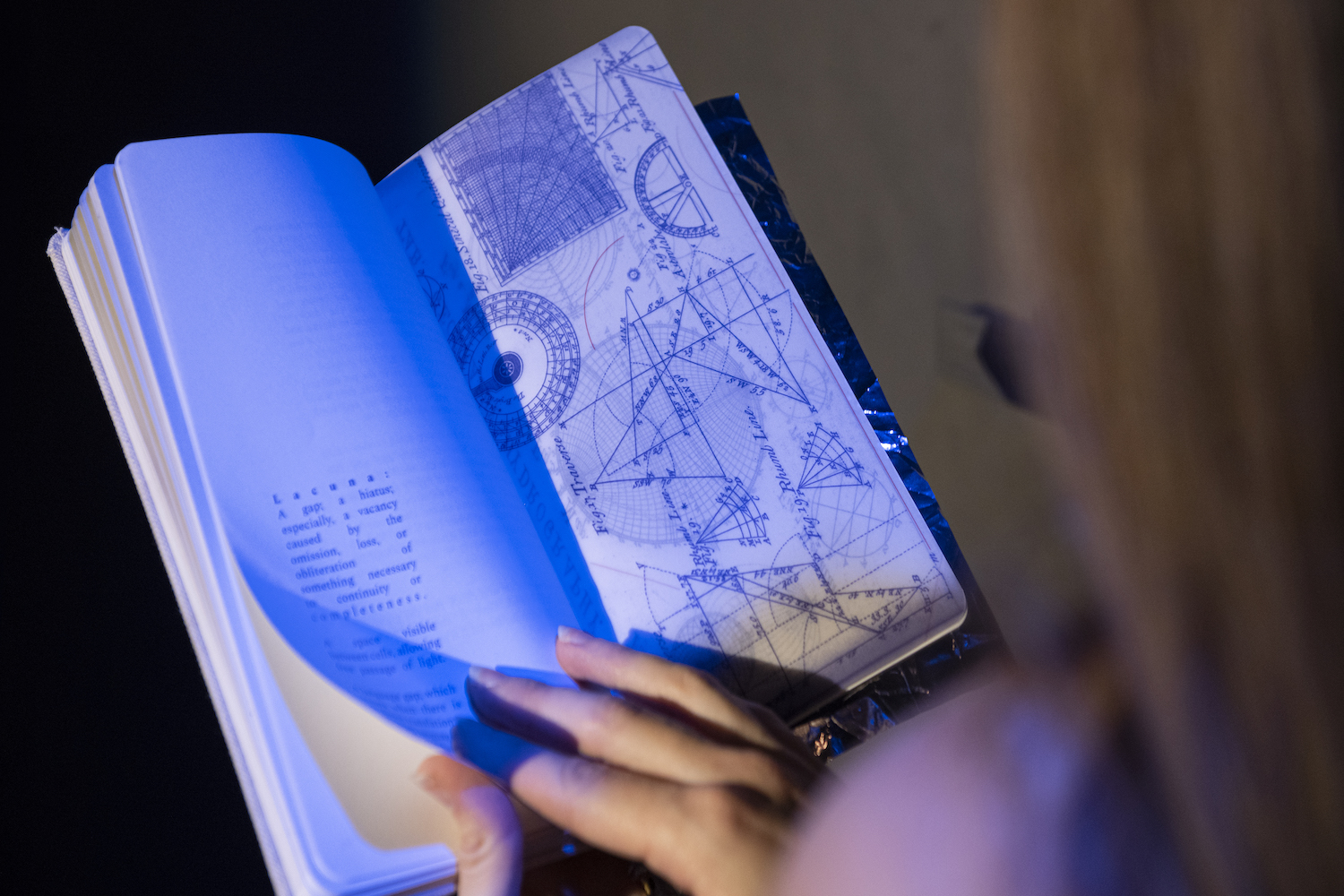
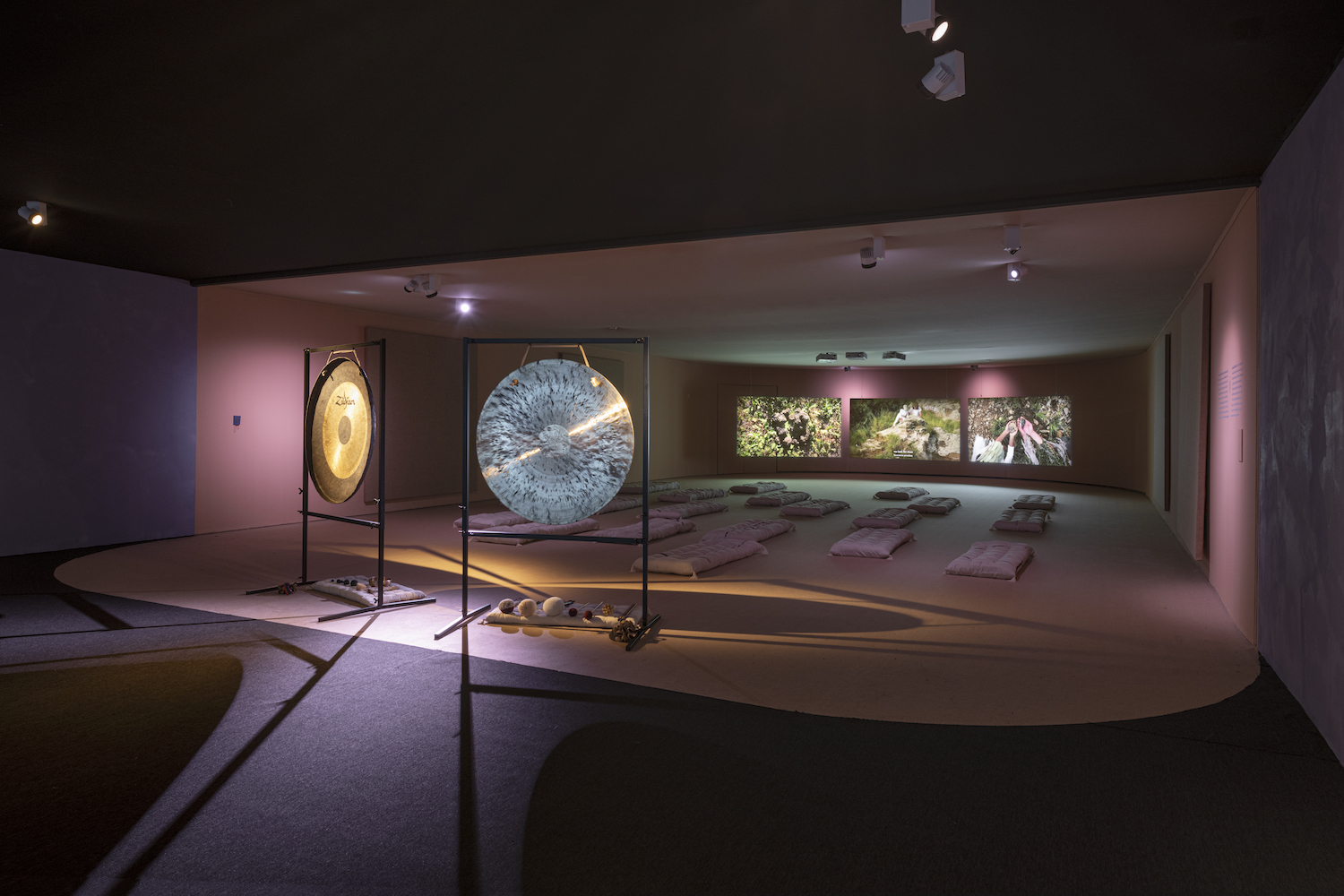
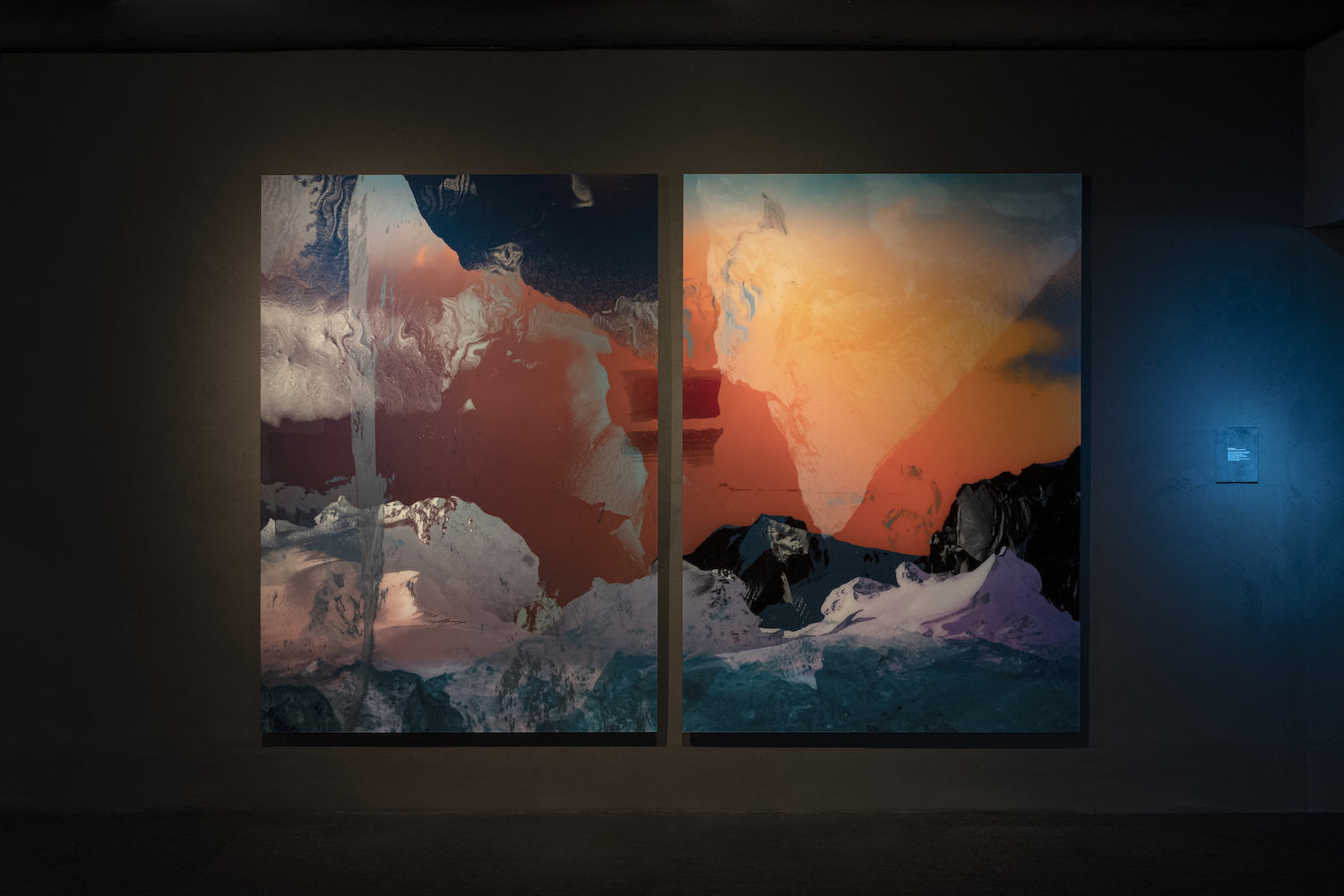
Credits
Imagery courtesy of Himali Singh Soin
